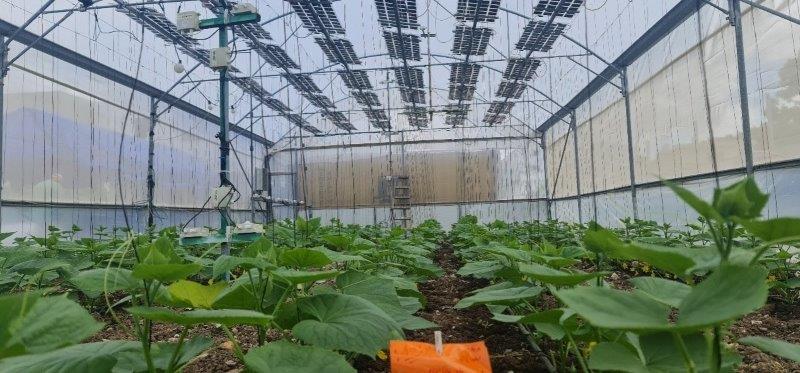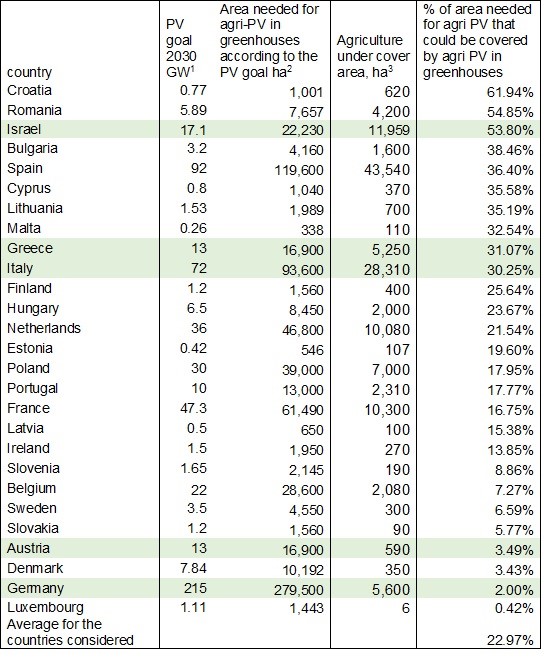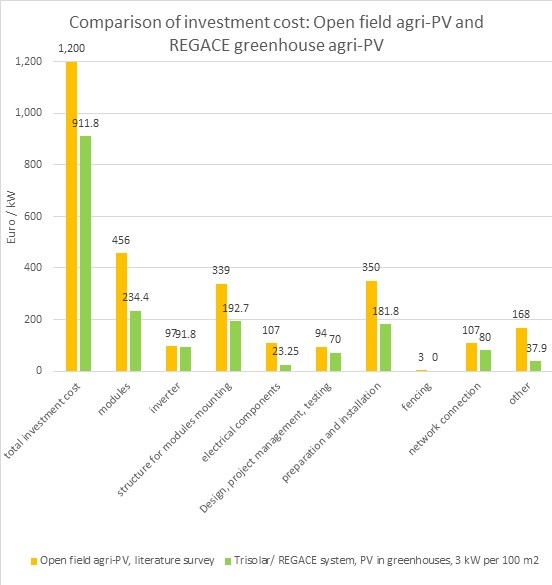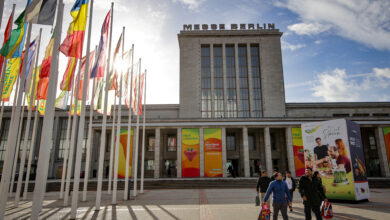Evaluating the Sustainability of Agrovoltaic Systems

An innovative agrovoltaics system inside a greenhouse, with a responsive tracking system REGACE Research, Triangle R&D Center, Kfar Kara.Photo: Dr. Ibrahim Yahya.
Liron Amdur* (amdurliron@gmail.com)
*Open Landscape Institute (DESHE), Steinhardt Museum of Natural History, Tel Aviv University, Israel.
Participant: Ibrahim Yehia, TheTriangleR&D Center, Kefar Kara, Israel.
Introduction
Agrovoltaic systems are installations that generate electricity using solar panels integrated into agricultural areas while maintaining agricultural activity. They make it possible to produce energy and food simultaneously, in contrast to ground-based photovoltaic systems, which are usually built on farmland and at the expense of agricultural production. Agrovoltaic systems can be integrated into different types of farms: open fields and orchards, greenhouses, fishponds, and livestock farms.
Agrovoltaic systems in open fields usually include a mounting structure to lift the panels above the crops, while partially roofing the area. Agrovoltaics in greenhouses are usually placed on the roof or attached to the sides of the greenhouse.
The current study, named REGACE, explores an innovative system developed in the Triangle R&D Center (Kefar Kara) that embeds the panels inside the greenhouses, under the covering sheets (Figure 1). This innovative agrovoltaics system uses a responsive tracking system, designed to optimize both energy and agricultural production. The system tracks both the sun and the plants’ needs, providing plants with the optimum light and temperature for growth and producing the optimum amount of energy.
This innovative technology was recently (July 2025) implemented in a model farm in Zemer, a town in the northern HaSharon region, Israel. The technology was installed in two greenhouses, each 500 m2 in size, growing tomatoes and cucumbers. The crops and energy production are scientifically monitored. The establishment and operation of this model farm is supported by the Israeli Ministry of Agriculture and Food Security.
Altogether, Israelhas today about 12,000 hectares of greenhouses and shade-houses for vegetables production. The research described here focuses on identifying the potential contribution of greenhouses to achieving sustainable energy and food production goals. Israel has set itself a target of 17.1 GW of solar power production by 2030,35% of which will be realized on the roofs of buildings. The average power density inour research greenhouses is 39.6 kW/1,000 m2, but conversations with greenhouse farmers indicate that some of them have installed systems with a power density of 50 kW/1,000 m2. This means that potentially greenhouse systems can contribute up to 53.8% of Israel’s solar energy targets. In European countries, greenhouses can contribute on average up to 23% of the solar energy targets (Table 1).

Table 1: Goals for solar energy, 2030, the REGACE partner countries and selected Eurpean countries, the land size needed to fulfill them using agro-voltaic systems in greenhouses, and the % that could be covered by agri PV in greenhouses. Power density of 0.365 MW/ha, as in the average of REGACE installations
Research Goals and Methods.
The study examined the sustainability aspects of agrovoltaics systems based on a survey of existing open-fields agrovoltaics systems sites in Israel; a world-wide literature review on economics and employment in open fields agrovoltaics; and the results of the PV greenhouse sites of the current research.
Results
Environmental aspects: Agrovoltaic systems in open farmland have a considerable visual impact, as tall iron poles are densely placed in them, and panels are placed at an average coverage rate of 27%. In contrast, in greenhouses, the panels are placed relatively close to the roof or the sides of the greenhouse, or under the cover sheets, and are visually assimilated into the greenhouse.
The considerable use of iron in the supporting structure of open fields agrovoltaics has a substantial carbon footprint. In agrovoltaic projects in Israel, the amount of iron in the mounting structure is about 103 kg / kW electricity. In the greenhouses in our study it is only about 48 kg / kW electricity, since the frame that holds the panels is attached to the structure of the greenhouse. Iron production consumes a lot of energy and involves significant carbon dioxide emissions. The carbon footprint of iron in the mounting structures of open fields agrovoltaic systems is about 178.2 kg CO2/ kW. In contrast, the carbon footprint of iron in the mounting structures in our research greenhouses is only about 91 kg CO2/ kW.
Economic aspects:
The cost of investment in an open fields agrovoltaic project is on average about 1,200€/ kW. The cost of investment in the agrovoltaic project in our research greenhouses is about 921€/ kW, 23% cheaper (Figure 2).

Figure 2.
Comparison of investment cost components in agrovoltaic systems in open areas and greenhouses
Sources: For agrovoltaic systems in open spaces: world-wide literature review; For greenhouses: REGACE research data, 6 experimental sites, in Israel and 4 European countries.
Societal aspects:
The cost of labor in installing PV systems in greenhouses is about 39% cheaper than installing an agrovoltaic system in open fields, where agrovoltaic systems produce also additional agricultural work due to the complexity of maneuvering agricultural tools between poles. In greenhouses, most agricultural work is manual, and no agricultural work is added following the installation of a solar system. Another social aspect that should be considered is that agrovoltaic systems in open fields are large-scale and remunerate large farms and agricultural corporations. Small greenhouse systems, on the other hand, support small family farms.
Discussion and Conclusions.
Some PV technologies have environmental impacts that call into question their climate benefits. The production of iron for the support system of an open-field agro-voltaic project consumes energy and emits a large amount of carbon, the very same factor that renewable energies are designed to reduce. The research presented can help policymakers make an informed decision about the type of energy projects that should be promoted, based on a variety of sustainability parameters.
Acknowledgments:
The study is part of the REGACE research project, which is coordinated by the Triangle R&D Center, Kefar kara, Israel, and is partneredwith researchers from Israel and several European countries. The project has received funding from the European Union’s Horizon Europe Research and Innovation Programme under Grant Agreement No. 101096056.The technology of PV integration in greenhouses was developed in the Triangle R&D Center.
Sources:
1. Israel Ministry of Energy, Road map to renewable energy in 2030, roadmap_reference_2030.pdf.
2. Chatzipanagi, A., Taylor, N. and Jaeger-Waldau, A., (2023) Overview of the Potential and Challenges for Agri-Photovoltaics in the European Union, Publications Office of the European Union, Luxembourg, 2023, doi:10.2760/208702, JRC132879.




